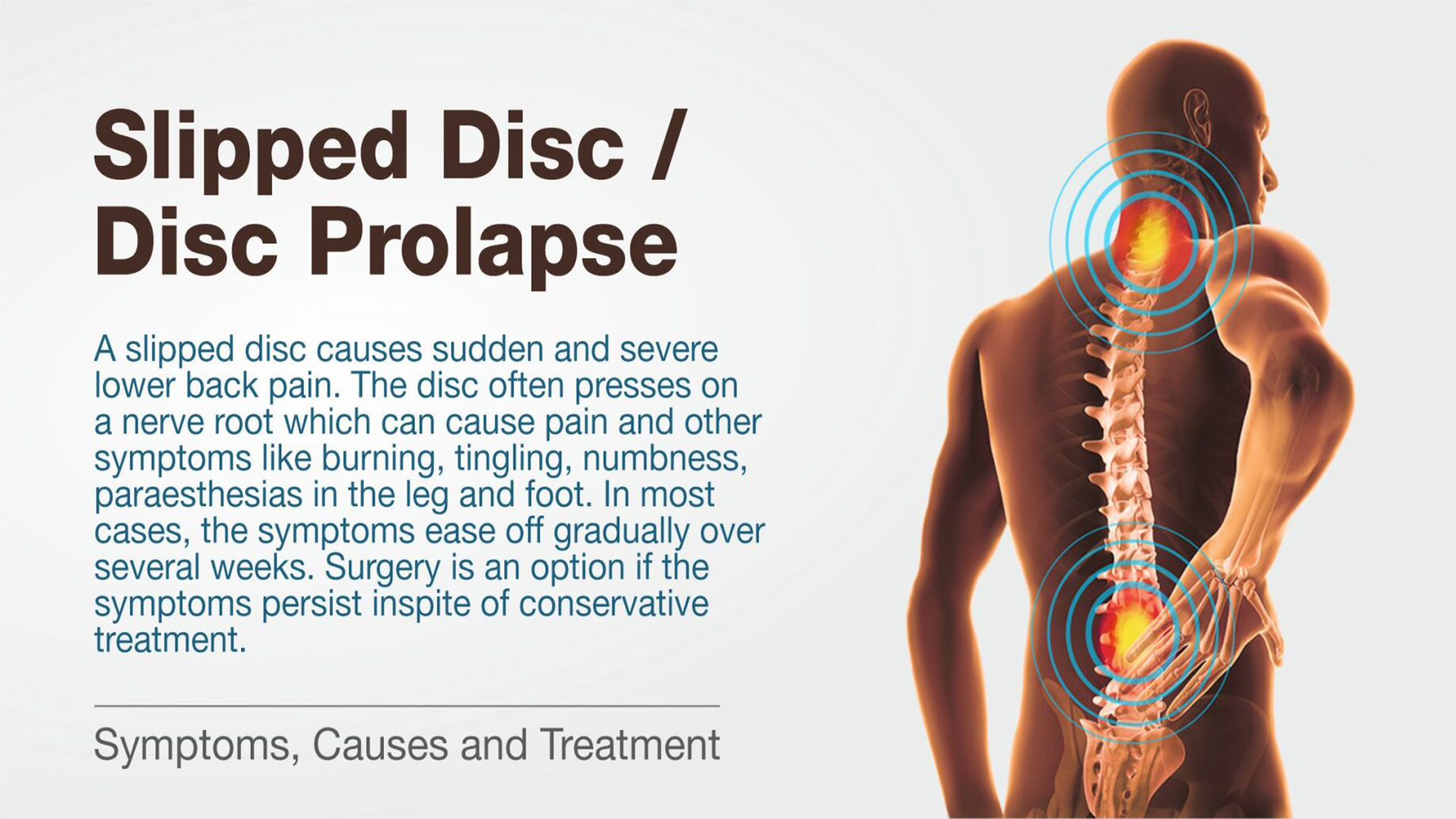Introduction
Back pain can range from mild to debilitating, and when caused by a herniated disc, it can be especially concerning. A herniated disc might sound alarming, but understanding what it is and how it contributes to back pain can help you manage it more effectively. In this article, we’ll break down the causes of disc herniation, explore treatment options, and provide health tips to help you manage and relieve back pain.

What is a Herniated Disc?
Your spine consists of vertebrae, with intervertebral discs between them. These discs act as cushions, absorbing shock and allowing movement. A herniated disc occurs when the soft, gel-like center of the disc pushes through a tear in the outer layer. This bulging material can press on nearby nerves, causing pain, numbness, or weakness.
Causes of Herniated Discs
Several factors can lead to a herniated disc:
-
Age: As we get older, our discs lose moisture and become less flexible, making them more prone to damage.
-
Injury: A sudden injury from lifting, twisting, or a traumatic event can cause a disc to herniate.
-
Repetitive Strain: Jobs or activities that involve bending, twisting, or lifting can wear down the discs over time.
-
Obesity: Extra weight places added pressure on your spine, increasing the risk of disc problems.
-
Genetics: Family history can make some people more likely to experience disc issues.
-
Smoking: Smoking can reduce blood flow to the discs, speeding up degeneration.
Treatment Options for a Herniated Disc
Most people with herniated discs experience relief through non-surgical treatments. Here are some common approaches:
1. Pain Management
-
Over-the-Counter Pain Relievers: Medications like ibuprofen or acetaminophen can reduce pain and inflammation.
-
Prescription Medications: For more severe pain, doctors may prescribe stronger pain relievers or muscle relaxants.
-
Pain Patches: Topical patches can provide localized pain relief.
2. Physical Therapy
Physical therapy plays a key role in recovery. A therapist can:
-
Teach exercises to strengthen core and back muscles, improve posture, and increase flexibility.
-
Introduce pain-relieving techniques like heat/cold therapy and ultrasound.
-
Improve body mechanics to prevent further injury.
3. Injections
-
Cortisone Injections: These can reduce inflammation and provide temporary pain relief, especially during flare-ups.
-
Nerve Root Blocks: These injections target specific nerve roots to relieve pain.
4. Bracing and Support
Wearing a lumbar support belt, like the Tourmaline Belt, can provide added support for your lower back, improve posture, and reduce strain. These can help, but should be used as a supplement to physical therapy, not as a permanent fix.
5. Alternative Therapies
-
Acupuncture: May help relieve pain and improve function for some individuals.
-
Massage Therapy: Helps relax muscles and reduce tension. You can also use products like a Cupping Massager for self-massage at home.
6. Surgery
Surgery is usually considered only if conservative treatments don’t work after several months. Common procedures include:
-
Microdiscectomy: Removing the portion of the disc pressing on a nerve.
-
Laminectomy: Creating space in the spinal canal to relieve nerve pressure.
-
Spinal Fusion: For severe cases with instability in the spine.

Health Tips for Managing Back Pain
In addition to medical treatment, healthy habits can significantly improve your back health:
-
Posture: Pay attention to your posture when sitting, standing, and walking. Tools like the ErogoCushion can support proper seated posture.
-
Lifting Techniques: Always bend at your knees and avoid twisting when lifting heavy objects.
-
Exercise: Engage in low-impact exercises like walking or swimming to strengthen your back and improve flexibility.
-
Maintain a Healthy Weight: This reduces stress on your spine.
-
Quit Smoking: Smoking impairs disc health and healing.
-
Use Supportive Products: A Tourmaline Belt can help during activities that strain your back, but focus on building strength in your muscles long-term.
-
Listen to Your Body: Rest when needed and avoid activities that worsen your pain.
-
Stay Informed: Keep up with your treatment plan and consult your doctor regularly.
Conclusion
Managing back pain from a herniated disc requires a combination of treatments and lifestyle changes. By focusing on pain relief, strengthening exercises, and good posture, you can improve your quality of life and reduce the impact of back pain. Whether using physical therapy, medications, or supportive products like the Tourmaline Belt, taking proactive steps will help you recover and maintain a healthy back. Remember, patience and consistency are key to managing a herniated disc.
References
-
Title: Herniated Disk in the Lower Back Authors: American Academy of Orthopaedic Surgeons URL: https://www.orthoInfo.org/en/diseases-conditions/herniated-disk-in-the-lower-back/
-
Title: Herniated disk - Lumbar Authors: Mayo Clinic Staff URL: https://www.mayoclinic.org/diseases-conditions/herniated-disk/symptoms-causes/syc-20354095
-
Title: Intervertebral Disc Herniation Authors: National Institute of Neurological Disorders and Stroke (NINDS) URL: https://www.ninds.nih.gov/health-information/disorders/intervertebral-disc-herniation
-
Title: Lumbar Disc Herniation: Treatment Authors: UpToDate (Accessed through subscription, general information publicly available) URL: https://www.uptodate.com/contents/lumbar-disc-herniation-treatment/print



